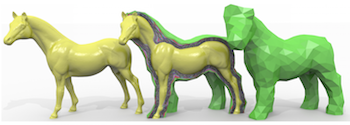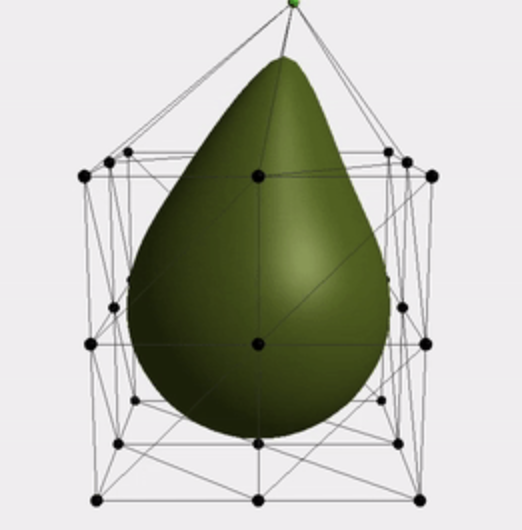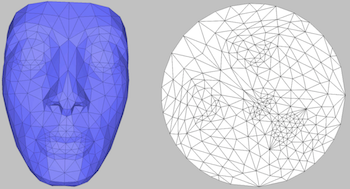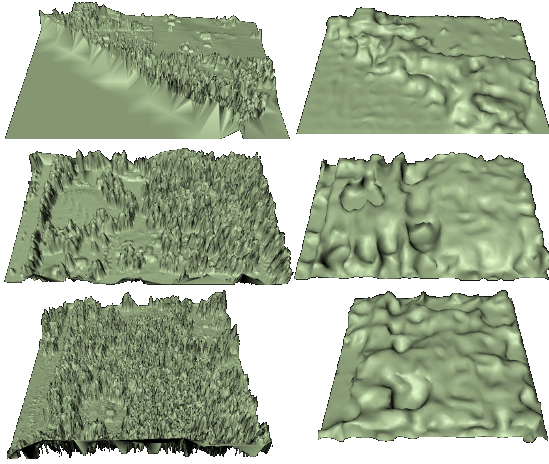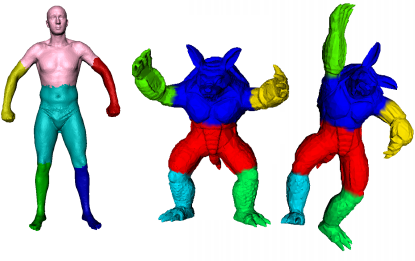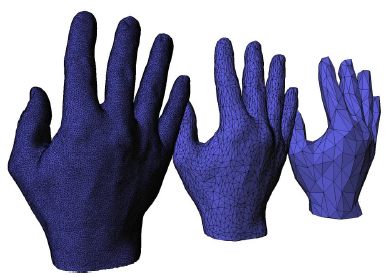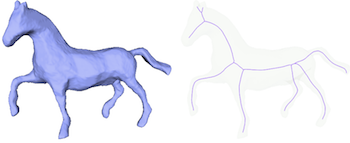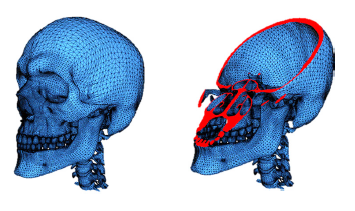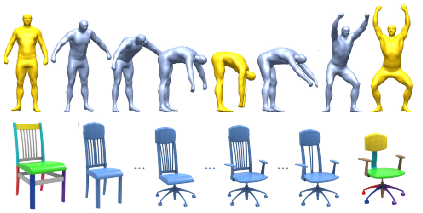CENG589 - Digital Geometry Processing
Objective: Digital Geometry Processing is a subfield of Computer Graphics. This introductive course teaches the geometry processing pipeline, which involves reconstruction, analysis, manipulation, visualization, and fabrication. The practical applications implemented throughout the course content will make the student comfortable in engineering, medical, scientific visualization, entertainment (VFX/games), and many other related disciplines that make use of mesh models.
- Surface Representation
- Polygons and Triangulations
- Point Sets
- Mesh Data Structure and 3D Graphics Programming
- Mesh Comparison
- Distances and Sampling on Meshes
- Descriptors on Meshes
- Surface Reconstruction
- Scientific Visualization
- Information Visualization
- Mesh Generation
- Shape Generation
- Shape from X
- Mesh Smoothing
- Remeshing
- Mesh Decimation
- Subdivision Surfaces
- Mesh Repairing
- Mesh Parameterization
- Mesh and Cloud Registration
- Rigid and Non-Rigid Registration
- Mesh Deformation
- Least-Sqaures Solutions
- Laplace-Beltrami operator/Laplacian
- Data-Driven Shape Analysis
- 3D Printing
Grading:
- 40%: 2 Programming Assignments
- 40%: Term Project
- 20%: Final Exam
Time & Place: Tue 14:40-17:30 & A101
Textbook: None. Lecture notes/videos will be sufficient. Use "Polygon Mesh Processing" by Botsch et al. as a reference.
Prerequisites : C/C++ programming required. Some background in Computer Graphics is helpful, but not necessary.
Instructor: Yusuf Sahillioglu. Office: B107. Email: ys@ceng.metu.edu.tr
Lecture Notes:
- Introduction
- Polygons and triangulations
- Point sets
- Mesh data structures, 3d graphics programming
- Mesh comparison (distances, descriptors, sampling)
- Surface reconstruction
- Shape generation
- Remeshing
- Mesh parameterization
- Shape registration
- Mesh deformation
- Laplacian operators
- Least-squares solutions, RANSAC, Hough
- 3D printing
- Wrap-up
Assignments:
Final Exam
Term Project:
Please read this document first. Keyword-based suggestions in that document are detailed below.
Please read this document first. Keyword-based suggestions in that document are detailed below.
- Cage: Tight caging of a mesh.
-
- Correspondence: Map computation over multiple and/or noisy meshes.
-
- CSG: Constructive solid geometry.
-
- Deformation: Facial performance capture, a real-time registration task. See also this.
-
- Deformation: Character posing.
-
- Deformation: Free-from deformation. See also this.
-
- Descriptors: Shape representatives.
-
- Fabrication: 3D printing.
-
- Parameterization: Mapping of a mesh in 3D to 2D.
-
- PCA: Synthesis of new shapes using the existing population.
-
- Reconstruction/Scientific Visualization: Isosurfaces.
-
- Reconstruction: Geographic Information System (GIS), LiDAR.
-
- Repairing: Normal orientation correction.
-
- Retrieval: Bringing similar shapes from a database.
-
- Segmentation: Clustering meaningful parts.
-
- Simplification: Decreasing resolution while preserving details.
-
- Skeleton: Extracting the medial axis of a given mesh. Can also be rigged.
-
- Subdivision: Increasing resolution in a consistent and smooth manner.
-
- Surfacing: Hole filling.
-
- Tetrahedralization: Representing volume as a mesh.
-
- Interpolation/morphing: Topology-varying or data-driven.
-
Back to the home page
